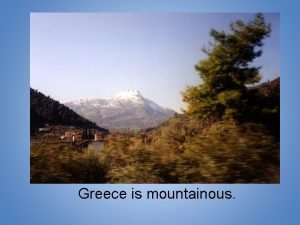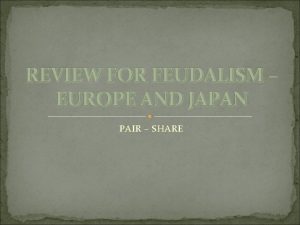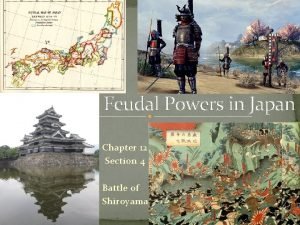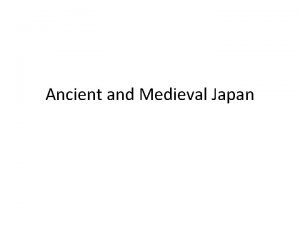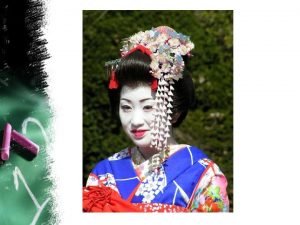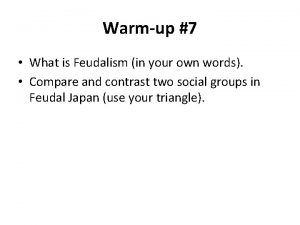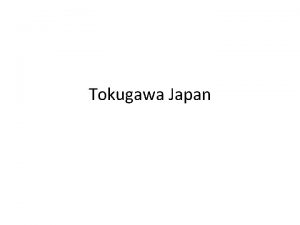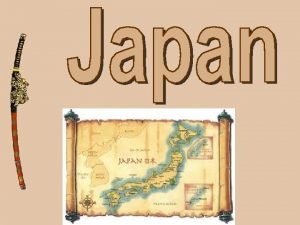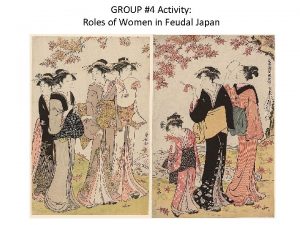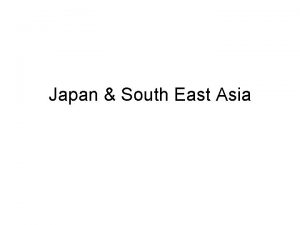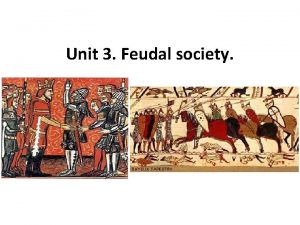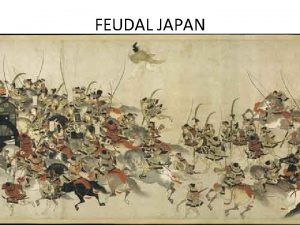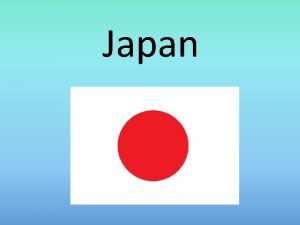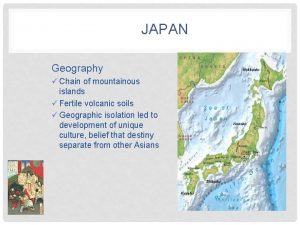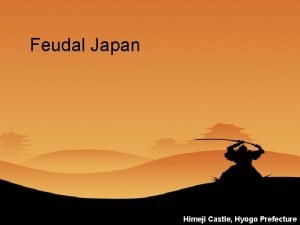Feudal Japan Japan Japan is very mountainous only













- Slides: 13

Feudal Japan

Japan

• Japan is very mountainous (only 11% of the land is good for farming) • The mountains are volcanic • The area is prone to earthquakes • In 1923 Tokyo was hit by a huge earthquake

• Early Japan was composed of a clan-based society • Early in the 7 th century, Shotoku Taishi a Yamato prince unified Japan based on the Chinese Model of government. • Wanted a centralized gov. under a supreme ruler. • Objective: limit the powers of the aristocrats & enhance his own authority. • Result: He was portrayed as a symbol of the Japanese nation

The Nara Period • After Shotoku died in 622, power fell into the hands of the Fujiwara clan (tribe) • The emperor was still a Yamato ruler, but was influenced by the Fujiwara • A new capital was established at Nara • Japan’s central gov’t could not overcome the powerful of the aristocrats and they were able to keep the taxes from the land for themselves. • Eventually, gov’t lost power.

Heian Period • In 794 the emperor moved the capital from Nara to nearby Heian-kyo (near present day Kyoto) • During this time the gov’t was returning to the decentralized system that had existed before the time of Shotoku Taishi

• Aristocrats turned to military force by creating a new class of people • Samurai “those who serve” • The Samurai lived according to a strict warrior code known as Bushido(“the way of the warrior”)

The Kamakura Shogunate • Minamoto Yoritomo, a prominent aristocrat, defeated several rivals • He set up a centralized gov. under a military leader known as the shogun (general), • the emperor remained ruler in name only but the shogun exercised the actual power • This was called the Shogunate

• Yoritomo created the Kamakura Shogunate • The Kamakura Shogunate lasted from 1192 -1333 • In 1333 the Mongols invaded Japan with 150, 000 troops • However, a massive typhoon (violent storm) nearly destroyed the entire fleet

Collapse of Central Ruler • The power of the local aristocrats grew during the 14 th &15 th centuries. • Heads of noble families, called daimyo (great names) relied on the samurai for protection. • By 1500 Japan was closed to chaos

• A devastating civil war known as the Onin War (1467 -1477) led to the destruction of the capital city of Kyoto and central authority disappeared. • Powerful aristocrats in rural areas seized control over large territories, ruled as independent lords, they were constantly fighting.

Life in Early Japan • Mostly farming, its people took advantage of the limited amount of farmland abundant rainfall to grow wet rice

Religion • Early Japanese people worshiped spirits called Kami, who resided in trees, rivers, streams, and mountains. • Spirits of ancestors were also acknowledged • These beliefs evolved into a religion called Shinto (“The Sacred Way” or “the way of the gods”)
